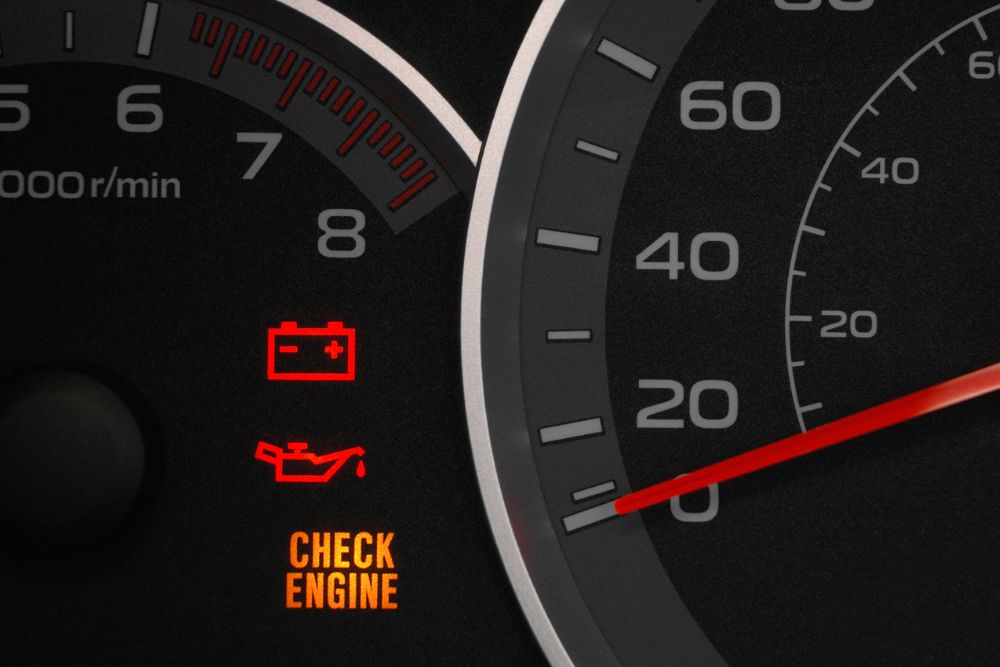That glowing engine symbol on your dashboard – often amber or yellow, sometimes flashing – is more than just an annoyance; it’s your car’s primary way of telling you something is wrong. Ignoring this “Check Engine” or “Malfunction Indicator Lamp” (MIL) can lead to a cascade of problems, ranging from minor inconveniences to severe and costly engine damage. Understanding the dangers of ignoring your car’s engine light empowers you to protect your vehicle and your wallet.
What Does the Engine Light Mean?
The engine light illuminates when your car’s On-Board Diagnostics (OBD-II) system detects a fault in one of its many sensors or systems that affect engine performance, emissions, or other critical functions. Modern vehicles are incredibly complex, and the OBD-II system constantly monitors hundreds of parameters. When a reading falls outside the acceptable range, the computer stores a “trouble code” and triggers the engine light.
The light can appear in two main ways:
- Solid/Steady Light: This indicates a fault that requires attention soon, but it might not be immediately critical. You should get it checked as soon as possible.
- Flashing Light: This is a severe warning, often indicating a misfire or other critical issue that could be actively damaging expensive components like your catalytic converter. Pull over safely and immediately if the light is flashing.
The Hidden Dangers of Delaying a Diagnostic Check
Ignoring a solid engine light might seem harmless for a while, especially if your car appears to run normally. However, this delay often hides significant risks:
1. Escalating Damage and Higher Repair Costs
What starts as a minor issue can quickly snowball. For example:
- A failing oxygen sensor: If left unaddressed, this can lead to your engine running too rich or too lean, causing excess carbon buildup. This, in turn, can clog your catalytic converter, a component that costs hundreds or even thousands of rupees to replace.
- A minor misfire: A persistent misfire not only reduces power but can also dump unburnt fuel into your exhaust system, overheating and destroying the catalytic converter.
- Low engine oil pressure: Continuing to drive with low oil pressure will inevitably lead to catastrophic engine failure.
By delaying, you often turn a relatively inexpensive repair (like replacing a sensor or spark plug) into a much larger, more expensive one involving major engine components.
2. Reduced Fuel Economy
Many engine light triggers relate to components that affect fuel combustion and efficiency. A faulty oxygen sensor, mass airflow sensor, or even a loose gas cap can disrupt the air-fuel mixture, causing your engine to consume more fuel than necessary. You might not notice it immediately, but over weeks and months, this adds up to significant money wasted at the petrol pump.
3. Increased Emissions and Environmental Impact
The OBD-II system heavily monitors emissions-related components. Many engine light issues directly impact your car’s emissions. A faulty sensor or component can cause your vehicle to emit excessive pollutants, contributing to air pollution. In many regions, a glowing engine light will prevent your car from passing mandatory emissions tests.
4. Compromised Performance and Reliability
An illuminated engine light often means your engine is not operating at its peak. You might experience:
- Reduced Power: The car might feel sluggish, struggle to accelerate, or perform poorly on inclines.
- Rough Idling or Stalling: The engine might run unevenly, vibrate excessively at idle, or even stall unexpectedly, especially at traffic lights.
- Starting Problems: In some cases, a persistent issue can lead to difficulty starting your car.
These issues not only make driving unpleasant but also decrease your confidence in your vehicle’s reliability, especially on long journeys.
5. Safety Risks
While not every engine light issue poses an immediate safety threat, some can:
- Sudden Stalling: If the engine light indicates an issue that causes your car to stall unexpectedly, especially at high speeds or in heavy traffic, it creates an extremely dangerous situation.
- Reduced Braking or Steering Assist (indirectly): While separate systems, a severely malfunctioning engine can sometimes indirectly impact the power steering pump or vacuum assist for brakes, making them harder to operate.
- Breakdown Stranded: A severe engine issue, ignored for too long, can lead to a complete breakdown, leaving you stranded in an unsafe location, potentially far from help.
What to Do When Your Engine Light Comes On?
- Don’t Panic: Stay calm.
- Check for Simple Issues: Sometimes, a loose or faulty gas cap can trigger the light. Tighten it and drive a few cycles to see if the light resets.
- Note Any Symptoms: Pay attention to how the car is behaving: Is it idling rough? Losing power? Making unusual noises? Smoking?
- Avoid Hard Driving: If the light is on, avoid aggressive acceleration, hard braking, or heavy loads.
- Get a Diagnostic Scan: The most crucial step is to have a mechanic (or use an OBD-II scanner if you have one) read the trouble codes. These codes pinpoint the specific system or component that has a fault.
- Don’t Ignore a Flashing Light: If the light is flashing, pull over immediately, turn off the engine, and arrange for a tow. Driving with a flashing light can cause thousands of rupees in damage in minutes.
Your car’s engine light is an important messenger. It communicates vital information about your vehicle’s health. Ignoring it is akin to ignoring a persistent cough that could be a sign of a serious illness. Be proactive: get your car scanned, understand the trouble code, and address the underlying issue promptly. This vigilance protects your investment, saves you money in the long run, and ensures you and your loved ones remain safe on the roads of Las Vegas and beyond.



